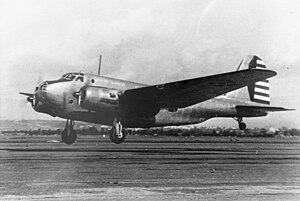New sensor loaded bombers will be central part of an integrated combat cloud
Power projection—the ability to deploy, sustain, and use military force overseas in support of United States national security goals—is a central mission of the US armed forces. It ideally requires unfettered access to international waterways, airspace, and regional ports and air bases. US adversaries, however, have observed the dependence of the American military on such access and have developed asymmetric technologies and capabilities to exploit the weaknesses in this method of power projection. Adversaries are deploying advanced air defenses—interceptors, surface-to-air missiles (SAMs), and radar networks—to defend their airspace and push US forces out of reach; ballistic and cruise missiles along with strike aircraft to attack US regional bases and naval forces; hardened facilities to limit damage from strikes; mobile systems to make the US targeting problem more difficult; attack submarines to interdict sea lines of communication; and cyber attacks to disrupt planning and operations. The combination of these capabilities creates what is known as the anti-access, area-denial (A2/AD) environment.
As we move further into the 21st century, we are experiencing a transition of not just time but also capability—capability that will allow for a paradigm shift in the role aircraft will play in meeting US security needs for the remainder of the century. Since the last B-2A bomber was produced in 1993 we have undergone approximately 15 Moore’s Law cycles (i.e., computer processing power doubling about every 2 Mitchell Institute for Aerospace Studies 18 months), resulting in an exponential increase in electronic capability with a phenomenal decrease in cost to achieve equal capability. This means that today we can incorporate sensors, processing capacity, and avionics in a single aircraft at an affordable cost to an unprecedented degree
What we previously labeled as “bombers” can play dramatically broader roles than they ever did in the past. To capture this potential, however, requires innovative thought and shedding anachronistic concepts that aircraft can only perform singular functions and missions. The era of specialized aircraft is over, as technology has moved on and resource constraints have grown. The information age allows new aircraft to become much more than just “bombers” or “fighters” but actually sensor-shooter aircraft. When integrated with other system “nodes” in every domain—air, space, land, and sea—they will have the capability to create a “combat cloud,” a manifestation of a self-forming, self-healing intelligence, surveillance, and reconnaissance (ISR)-strike-maneuver-sustainment complex. The cloud has the potential to usher in an entirely new era in defense and to play a crucial role in the “third offset strategy” discussed later in this paper.
Pentagon envisions “combat cloud” as force multiplier for shrinking fleet
The new LRSS aircraft was determined to be a central element in the emerging combat cloud family of systems proposed by Pentagon planners. The critical attributes of the new long-range sensor-shooter are its combination of long-range, large payload, high survivability, and versatility to adapt to new developments. These capabilities makes the system uniquely suited to dealing with the challenges posed by the evolving security environment:
• Long Range provides the ability to respond rapidly, flexibly, and globally; to strike from bases outside the enemy threat envelope; to reach deep into enemy territory and hold any target at risk; to use tanker assets efficiently; to provide persistent attack; and to find and attack both fixed and mobile targets.
• Large Payload provides a “deep magazine” for persistence at long range in an A2/AD environment; increases the capacity of the Air Force to deliver a mix of weapons (including heavy munitions), especially at long range; enables operations at long range with a relatively small, efficient number of aircraft; and permits the destruction of hardened and deeply buried targets.
• High Survivability (involving stealth, tactics, and electronic warfare) enables bombers to enter heavily defended airspace and attack the enemy’s most highly valued targets without suffering prohibitive losses; greatly reduces the requirement for supporting aircraft and tankers; facilitates the operations of other aircraft by destroying enemy air defenses so that friendly, nonstealthy aircraft can operate; enables the use of direct-attack munitions, far more cost-effective than standoff weapons; and places a far greater burden on the enemy defense than nonstealthy aircraft.
• Versatility allows for adaption to new developments, including new threats; for incorporating new technology, such as directed energy weapons, application of effects in the cyber domain, advances in electronic warfare, and kinetic weapons; and for accommodating expanding computer processing power and the new sensor and shooter capabilities associated with that expansion.




